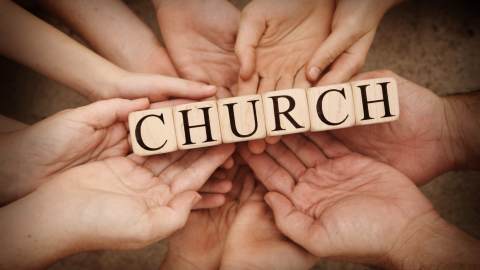What Makes a Church Multiracial?
0 comments
294 views

Lately, I have been reading and researching the movement of multiracial churches in the United States. What makes a church multiracial? Are the music, the reading, and the prayer interpreted bilingually? A choir led by a different ethnic group? Multiethnic food or flags from other countries? Although all of these things are pretty and nice, none of them answers the question.
Let’s talk a little about the experience of current participants, those who are still looking, and those who decided not to attend a “multiracial” church. National research, studies, surveys, and statistics that have been conducted show that at the surface level, “multiracial, multicultural, or multiethnic” churches look very attractive at first. Still, as time goes by, the interest is lost. That allure that once felt is no longer present. If this is a multiracial church, why don’t I feel good? Why do I feel like I’m a bystander? Why do I feel excluded?
The challenges for a congregation that wants to be multiracial are many. It is not about having the desire, nor is it about thinking “it is the right thing to do.” Having discussion groups on racism, participating in workshops, taking the Intercultural Development Inventory (IDI), etc., are all good things. But it’s not enough. It is not a matter of doing but a case of being. It requires a change of life, a change of heart.
The vast majority of churches that seek to be multicultural face the significant problem of retaining attendees and adherents of color. Remember that racism in the United States was born before the nation’s very founding. What led to the founding of colonies in the New World was justified racism, causing Native American genocide, the dehumanization of Blacks, and the exploitation of Asians and Latinos. Before thinking about becoming a multiracial church, it is crucial to examine the intentionally alienating history of the country. If we can understand the past, we can decipher the obstacles that prevent achieving an actual multiracial congregation.
Before slavery was declared legal, a multiracial environment already existed. This environment developed when the English urgently needed a workforce at the tobacco plantations in Virginia, sugar, and similar colonies in the Caribbean. These indentured servants were not just Black. These servants, men, women, and children, came from England, Ireland, Holland, Scotland, France, and other parts of Europe. In this servant/workforce group, there were Blacks and whites. All these different people spoke different languages and had different cultures. Yet they ate together, worked together, fled together, received the same corporal punishment, and suffered hunger and poverty. All of them, without exception, were at the bottom of colonial society. They were not considered as people but as property of the planters.
What united these poor and despised people was the shared experience they had. This camaraderie, this sense of unity, could not happen between a servant and a wealthy planter. It would be like trying to mix water with oil. The inequality between the two was notorious. Even the motivation to risk a trip of almost three months to acquire common diseases of the time due to the lack of hygiene and abundance of rats, exposure to pirate attacks, furious storms, and shipwrecks was radically different.
After Bacon’s Rebellion (1676-1677), we see the first legislative acts that led to a total division between Blacks and whites. We can make a long list of laws and acts that were created to affirm, promote and perpetuate the division between Blacks and whites after this. And the church at the time, through its sermons and teachings in the universities, led the way in confirming the difference between the white population and the Black and Indigenous people.
The results of this watershed moment sowed the seeds of division, inequality, injustice, and oppression on which this nation and the church were built. Yet it is a relatively unknown piece of history today. In that case, it is challenging to expect good wishes and intentions and a few superficial changes to seek to solve the problem. If you know this history, you’ll see that racial issues have been maintained for centuries.
Becoming a multiracial church is not a quick thing to do. It’s not like heating a plate of food in the microwave. It is a long and challenging job that requires a change of mentality. It involves questioning everything that allows (intentionally or not) the perpetuity of a non-inclusive system.
However, getting discouraged when seeing the immensity and depth of the work can be natural and normal. But, it is good to be realistic and not naive. To become a multiracial congregation requires one to put all the trust in the Lord and the power of the Holy Spirit.
Racial Reconciliation, Multicultural
Racial Reconciliation
Racial Reconciliation, Ministry in Canada
Connect to The Network and add your own question, blog, resource, or job.
Add Your Post
Let's Discuss
We love your comments! Thank you for helping us uphold the Community Guidelines to make this an encouraging and respectful community for everyone.